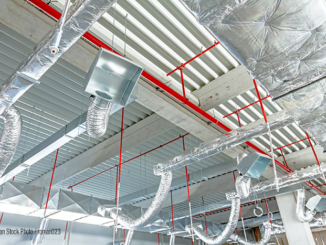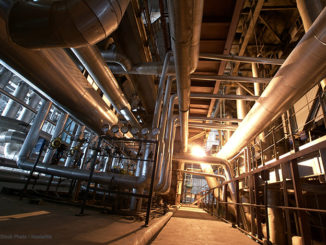
By / Jessica Kirby, Editor, Sheet Metal Journal
Summer has flown by, and with it opportunities, at least for some. Believe it or not, there has been a bright side to the pandemic, but realizing it has been a matter of perspective. For example, not only was construction declared essential, construction companies struggled to find people when the country hit an insanely high unemployment rate at 13.7%. Not that struggling to find work is great, but it beats there being no work at all. (Check out page 8 to read about Tin Tech, whose owner survived and thrived through Canada’s last tough time: the 2009 recession.)
Even more notable, the construction industry, which has an unusually high number of people who suffer with addiction and mental health and higher than average rates of suicide, scored in the top three industries faring well in the mental health department during COVID. See page 11 for more about why that is great and to learn what else we need to do about these issues. Need resources? Flip to page 13.
Along the same lines, the pandemic is forcing people, especially those who are more reluctant to open up, to think about self-care and asking for help. Just last week, three different interview subjects of mine randomly began talking about how they’d been changing their habits to improve their mental health, as though they were talking about a sore back or a stubbed toe—no shame, all natural, all progressive. See page 13 for ways to take up the self-care torch and put some feel-good in your soul on the daily.
Of course, change never occurs in a vacuum. When something unexpected or unfavourable happens, we often panic, envisioning the context of that thing will remain the same and have to operate without the critical component that changed—but if you pull a can of soup out of the pyramid stack at the grocery store, the other cans don’t just sit there. They fall into new places, taking on new roles to fill up the hole left, or they come crashing down, demanding that we rebuild in a stronger, more cohesive manner. That is how all change works.
In construction, costs increased for contractors, productivity wavered, there were new demands on time, access to materials, and work-life balance, but there were also changes that will make the industry more efficient, productive, and lucrative moving forward.
The need for social distancing onsite and more controlled construction environments led to a dramatic increase in our reliance on offsite construction options, like prefabrication and modularization. This presents unprecedented opportunities to reconcile an appropriate and supportive integration of technology into the labourforce.
We all know that construction is practical, in-person work, but now we know we can communicate remotely, hold meetings online, communicate more effectively, wear technology that keeps us safer, and use AI to monitor safety on site. There is no telling where this will take us in the future.
The paperless office is not a new concept but very few companies have taken the plunge. The possibilities became front and center once virtual meetings, working form home, and not sharing objects became the norm. This makes a virtual, paperless workflow seem more possible and imaginable as we move into the future.
The federal government and NRCan have been talking about the importance of building retrofits—particularly to HVAC and airflow systems—for decades, but the last two years truly moved the needle on opportunities (and necessity) for building owners to refurbish older buildings. Commercial tenants are finding that remote work is both feasible and attractive, and some companies are either downsizing or eliminating their office spaces, leaving landlords with all kinds of space in need of refurbishing. (While you are thinking about refurbishing, check out page 14 for a technical bulletin on duct insulation).
Not only that, but building owners want to know and advertise that their systems can better protect occupants from possible future health crises. They want HVAC systems that can filter out viruses, and they want floor plans that easily support social distancing. The future is rife with opportunity.
One area in which nearly every industry struggled was supply chain, but that misfortune has been the catalyst for a new view and renewed diligence around managing this aspect of construction businesses. Delays and lost work have highlighted a level of complacency around managing the supply chain, and have provoked interest in intelligence-led supply chain management that embraces direct relationships and collaboration with subcontractors.
There are other things. We have a renewed sense of what is important in the world—family, health, self-care, sustainable work—and greater awareness of wastefulness. We are appreciative of social time and travel, and we have learned to tell our nurses and doctors we appreciate them, connect with the elderly, and tip our servers. As the next year unfolds, there is no telling what other ways the cans will fall, but if there is anyone who can restack them with integrity, it is the construction industry. ■



